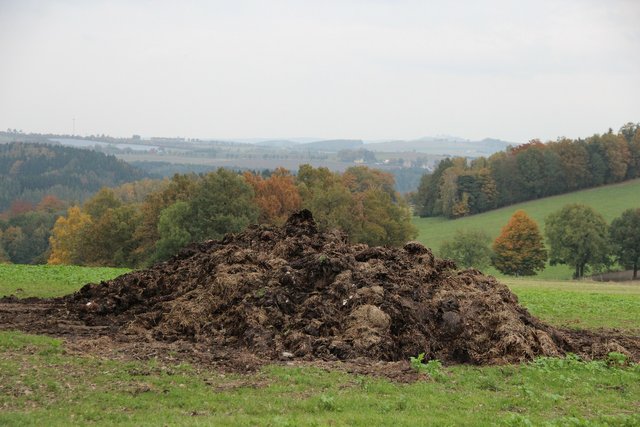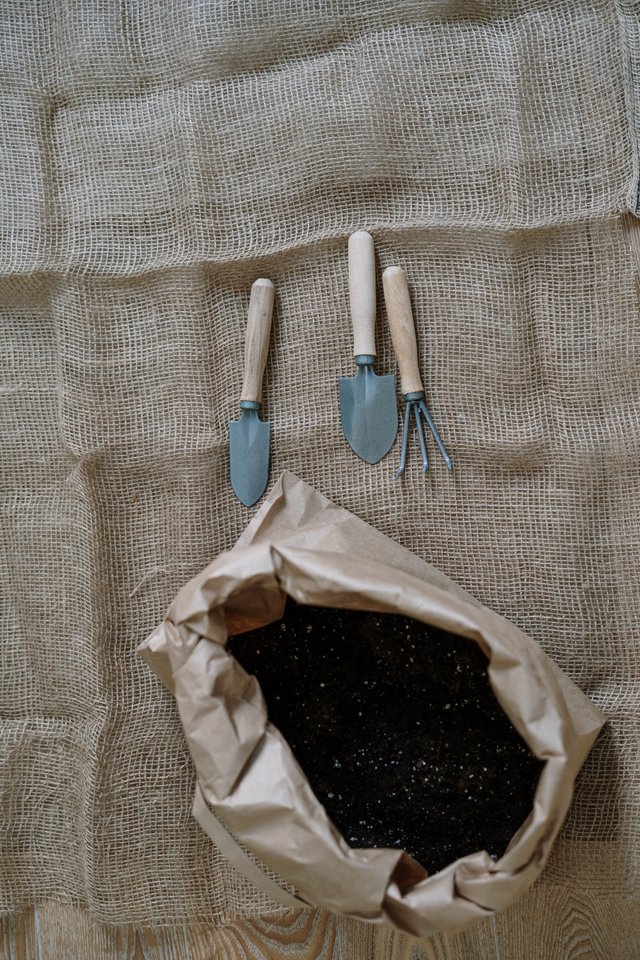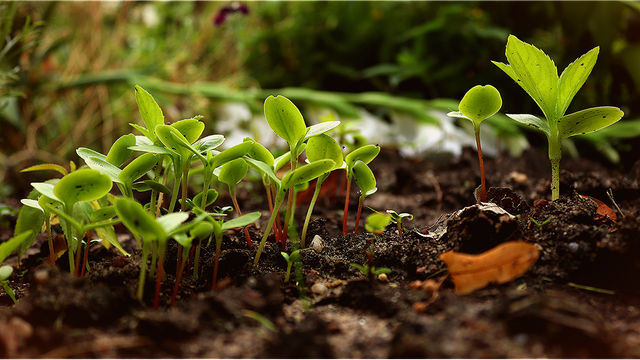Intro
As a person who loves permaculture and learns about it for years, I have decided to share with you all my knowledge gained during the volunteers on many farms from Poland and Spain to Chile and Paraguay and during my theoretical studies. Lessons will be published regularly, I share it totally for free of CC-0 license (which means you can copy my text and share it wherever you want to, without the need to mark me as an author). I hope it will bring you joy, even though the very first topic we will talk about is quite stinky... ;)
Lesson 1 - basics about manure and liquid manure
Manure gained importance as a fertilizer since the second half of the 20th century when world consumption of meat increased sharply, industrial farms began to emerge, and some way had to be found to utilize the enormous by-product of such farming as animal waste.
However, I strongly recommend not to use manure from industrial farms as they can do more harm than good to a permaculture garden. Only excrements from naturally farmed animals (to avoid antibiotic content, etc.) should be used to prepare manure and liquid manure.
WHAT IS MANURE?
Manure, simply put, is a fertilizer composed of animal excrements, usually fermented with straw or grass (and the ammonia from the urine which is there, especially when the manure is collected with a grass directly from the barn or stables), less often applied directly to the soil.
Fresh manure cannot be used on plants, as high concentrations of ammonia are harmful to them. There is also a risk that the manure is too acidic and can "burn" the plant (for example goose or duck manure). However, it can be used sometimes in late autumn, digging along with the soil and giving it time to decompose until spring.
Manure fermentation takes place on specially prepared compost heaps, where it is covered with compost and stored for a year
MANURE PREPARATION:
1.Simultaneously, 1-2 times a day, remove feces and bedding from barns, stables, etc.
- Store everything on a manure plate with a hardened substrate and drainage or in liquid manure (concrete containers). The mounds on the slab should be no more than 80 cm high, otherwise, it will overheat.
- Immediately mix the manure with the soil and mineral flour. If you mix it with compost, also add calcium, preferably algae
- Store everything for at least one year
HOW TO APPLY MANURE?
In orchards and perennial crops, manure is applied in the fall before new crops are planted. In subsequent years, it is worth sprinkling under trees and shrubs with composted manure litter (scatter at a distance of 30 cm from the trunk, cover over 2 cm of soil, water with a solution of dried manure and rainwater).
In the case of annual plants, it should be taken into account which of them like soil immediately after manure application, and which in the second or third year after manure (it will be described in the next lessons)
The traditional application of fertilizer is performed every three or four years and involves digging up the scattered manure in an amount of about 2.5 kg per 1 m2 with a spade or fork with the top layer of earth. It is best to do it in autumn because in spring it does not have the best effect on plant growth unless it is well composted - then only in early spring. Composted does not have to be dug, it is enough to mulch with soil.
Use more manure (but not more than 4 kg / 1m2) on light soils, less (from 2 kg upwards) on heavy soils.
On the farms where I was working, I dug 12-18 cm deep on heavy soils, 18-20 cm on light soils. The soil dug too deep makes it difficult to decompose, too shallow - it accelerates.
I perform the treatment on the same day I spread the manure in the field, or on the next day at the most (ideally within 12 hours, up to 24 hours). Untreated manure loses a lot of nitrogen.
The absorption of minerals usually gains 40-50% in the first year, 30-35% in the second, and 10-15% in the third year.
The manure export should start from the oldest pile, taking into account the cross-sectional layers.
If you intend to add calcium to the soil, do not use manure, because calcium accelerates its mineralization. As a result, plants do not use the full nitrogen and phosphorus potential of the fertilizer. If it is absolutely impossible to carry out these two treatments in separate years, at least keep a minimum interval of 6 weeks between them
Dosing of manure and liquid manure is limited by law, as high concentrations of nitrogen and phosphorus destroy the soil and have a negative effect on groundwater. For the same reason, manure cannot be used on flooded soils, covered with snow, frozen to a depth of 30 cm, in areas less than 20 meters from water intakes, reservoirs and bathing areas.
The annual nitrogen dose from fertilizers should not exceed 170 kg per hectare. This is about 4 kg of manure or 4.5 liters of slurry per 1 m2 of the field.
WHEN TO USE MANURE?
Manure is a high-energy fertilizer that releases minerals into the soil over several years. Therefore, fertilization should be performed on heavy soils every 4 years, preferably in autumn, before planting vegetables, and on light soils, every 2-3 years at the same time of the year.
Alternatively, manure can be used in the spring, but then we have to make sure that it is perfectly composted.
It is best to use manure on a windless, cloudy, slightly rainy day
WHAT IS LIQUID MANURE?
Liquid manure is a liquid fertilizer based on manure. Properly prepared liquid manure has fewer nutrients than manure and is much easier to store. Considering its power, it requires moderation in its dosage.
You can use human and other animal excrements, bovine blood, urine, ground bones, or, additionally, to strengthen the preparation - wood ash
Liquid manures tend to be thick (more than 8% dry matter) or diluted (less than 8% dry matter)
Liquid manure mixed with clay is sometimes used to soak the roots of plants in it before planting to give them more energy for the start. Clay absorbs soluble compounds and gradually releases them in a limited amount
HOW TO PREPARE LIQUID MANURE?
- Put any manure in a wooden barrel or bucket (not made of metal), it can be with straw or grass.
- Pour the manure with water in the amount of 10 liters for every 1-3 kg of excrement and set aside in shade
- Stir the substance daily
- If the manure is well prepared, the foam will appear on the manure after a week
- The liquid manure is ready when little or no new foam is formed
- use diluted with water 1:10, for acidophilic plants in the proportion of 1:20. Diluted in less water, it can be used on the weakest soils when nothing is growing on them (1: 3-1: 4). The best time to apply it is right after the rains have stopped, while the soil is still moist. A few days after applying the fertilizer, the soil should be kept moist so that the minerals are well distributed and that it does not burn the roots.
- Apply the liquid manure in early spring, not more often than two or three times at two-week intervals.
- Any unused residue from the bottom of the liquid manure container can be added to the compost. Microorganisms contained in them accelerate composting.
PROPERTIES OF LIQUID MANURE
The carbon to nitrogen ratio (C: N) for liquid manure is half that of manure, and about 50% of the nitrogen in it is in the ammonium form, i.e. directly available to plants (20-40% in manure), General use nitrogen from the liquid manure depends on the date of its application and ranges from 40-80%. Moreover, the losses of organic matter are low and amount to 10% during storage. During manure storage, losses of organic matter and nitrogen can be as high as 40%.
Nevertheless, that fertilizer always has lower nutritional values than manure, which can be seen in the table below.
| Ingredients (in %) | Liquid Manure (pig's feces) | Manure (pig's feces) |
|---|---|---|
| Nitrogen (N) | 0,3-0,4 | 0,5 |
| Phosphorus (P2O5) | 0,15 - 0,2 | 0,3 |
| Potassium (K2O) | 0,3-0,4 | 0,7 |
| Calcium to Nitrogen ratio | 7:1 | 14:1 |
Liquid manure works better if we want to quickly nourish plants, manure when we want to spread the release of nutrients more evenly over time.
I realize that permaculture is not the mainstream hobby and many people may not be interested in reading posts related to that subject. For those of you who read it, I have the hidden contest. Answer in the comment five questions I will ask you below to get the chance to gain a small reward. First-person who will reply correctly will get 3 STEEM. From the other answers, I will randomly choose two users who will be rewarded 1 STEEM each. All the information I am asking you about is included in this publication.
- How long does the manure have to be stored on a manure plate before using it?
- How often should we use manure on the field?
- What weather is the best to distribute the manure on the field?
- What is stronger: manure or liquid manure?
- What is liquid manure mixed with when used to soak the roots of plants in it before planting?
Thank you for reading,
@papi.mati







The secret contest is finished. The reward goes to dwarrilow2002 who answered almost all the questions correctly.
What is liquid manure mixed with when used to soak the roots of plants in it before planting?
The correct answer is water AND clay. Clay absorbs soluble compounds and gradually releases them in a limited amount.
Check the next permaculture lessons to gain the rewards.
Downvoting a post can decrease pending rewards and make it less visible. Common reasons:
Submit
How long does the manure have to be stored on a manure plate before using it?
"Store everything for at least one year."
How often should we use manure on the field?
"Fertilization should be performed on heavy soils every 4 years, preferably in autumn [(but can happen in the spring if fully composted)], before planting vegetables, and on light soils, every 2-3 years at the same time of the year."
What weather is the best to distribute the manure on the field?
"It is best to use manure on a windless, cloudy, slightly rainy day."
What is stronger: manure or liquid manure?
Not liquid manure.
What is liquid manure mixed with when used to soak the roots of plants in it before planting?
Water!
I wasn't going to answer your challenge questions to let others win, but this is a subject that I am familiar with - I've forked enough in my lifetime. While we had a dairy farm, I also spread our neighbour's manure, who raised chickens. You really didn't want a windy day on those occasions.
Not all soils are the same. In Canada, certain nutrients are missing from the soil. An important one is Selenium which was included in rations for calves. We had salt and mineral licks for the cattle. Since we fed the cattle the crops grown on our property and then fertilized the fields with their manure, it established a loop that enriched the soil with these other nutrients.
In North America, most cropping is a monoculture, and one must question how poor the nutrient value of those crops is after depleting the soil.
Downvoting a post can decrease pending rewards and make it less visible. Common reasons:
Submit
It's so great to know that you was working on a dairy farm! I'm sure I could learn a lot from you!
Yes, monocultures may be more efficient in a short term but the degradation of soil is enormous, not to mention about the negative impact it has for the biodiversity.
Of course, not every soil is the same. That's also why I have started with manure as quite universal subject to describe. I have plenty of notes about some things which are valid in one or two Koppel climates while I would like to make my lessons more universal. I am thinking how to adapt it to the readers from around the world :)
I haven't been in North America yet. I am migrating between Europe and South America, once visited Asia. Some WWOOF or Workaway in Canada could be a good post pandemic plan to see how does permaculture world look like there.
Thank you for participating in the contest. I will publish the correct answers and winners list in two days.
Downvoting a post can decrease pending rewards and make it less visible. Common reasons:
Submit
I don't know if this is the right program to look at if you want to visit and work in Canada, but it is more or less in the right area. https://www.canada.ca/en/immigration-refugees-citizenship/services/work-canada/iec.html
If you are close to a Canadian Embassy, they might give you better advice.
Downvoting a post can decrease pending rewards and make it less visible. Common reasons:
Submit
Buena publicación, la verdad como buena citadina no conocía mucho al respecto, pero este conocimiento no está de más, aunque sea sobre estiércol :D
#affable
Downvoting a post can decrease pending rewards and make it less visible. Common reasons:
Submit
This is wonderfully made, thank you for the knowledge and value you are providing! I wish you the best. From a new Gardener.
Downvoting a post can decrease pending rewards and make it less visible. Common reasons:
Submit
Thank you for your kind comment
Downvoting a post can decrease pending rewards and make it less visible. Common reasons:
Submit